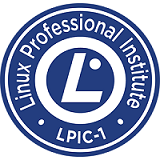Categories: Linux administration, Linux (LPI), Networking
The fundamental topics in Linux and network administration: shell script language Bash, users and permissions, processes, boot scripts, programs, basic server services, protocols – including TCP/IP, addressing and routing.

Training is authorized by Linux Professional Institute
This training is a second part of our LPIC-1 certification path – a followup to the LPI-101 training. Learning material covered by these two training courses allows to pass the LPIC-1 exam.
After LPI 102, we suggest:
- (if you took the LPI 101 course or mastered the material on your own) taking the LPIC-1 exam,
- continuing learning on LPIC-2 level – through the complete Advanced Linux Administrator course, or LPI 201 and LPI 202 training courses.
To persons interested in acquiring the complete knowledge required by LPIC-1 exam from the very basics, we recommend our long course Linux Administrator. It not only covers all the material covered by LPI 101 and LPI 102 training courses – it has also a module on selected network services, and costs less than the two training courses combined.
This training is equivalent to days 5-8 of the Linux Administrator course.
Duration
5 days
Agenda
- Automating work: shell scripts
- operations on text, variables
- conditions
- loops
- functions
- Users
- users, groups – adding, deleting, configuring
- pam
- administrators – sudo
- Finding files
- SQL fundamentals – topics important for a future administrator
- databases (tables, data types)
- SQL basics (SELECT, INSERT, UPDATE, DELETE)
- X-window
- basic configuration (support tools)
- architecture (incl. networking) with examples
- basic tools and smart features
- System customization
- language, regional settings
- graphical environment settings
- accessibility
- Encryption
- Fundamental services
- logs
- cron and at
- printing
- NTP
- Basic e-mail configuration
- sending e-mails
- redirecting and aliases
- Basic network configuration
- Computer networks – an overview
- topologies
- network hardware and technologies
- TCP/IP and ISO/OSI model
- local area networks and the problem of connecting networks
- addresses, ARP and RARP
- IP protocol (IPV4 and IPV6) and routing
- ICMP
- TCP and UDP
- Configuring network interfaces
- scripts
- manual setting up interfaces (ip command)
- tools such as ping, traceroute, mtr, whois
- resolving names. DNS.
- DHCP
- how the protocol and the services work
- basic configuration of the server and the client
- Remote working
- ssh (keys, X forwarding, ports, scp and sftp)
- Security fundamentals
- identifying devices (nmap, server version identification)
- basic intrusion techniques (buffer overflow, string format)
- critical rules
- Identifying and solving problems
- prevention: backup strategies and methods
- what to do in case of a catastrophe
Audience and prerequisites
Basic familiarity with Linux, ability to use the command line and familiarity with the shell.
Certificates
Course participants receive completion certificates signed by ALX.